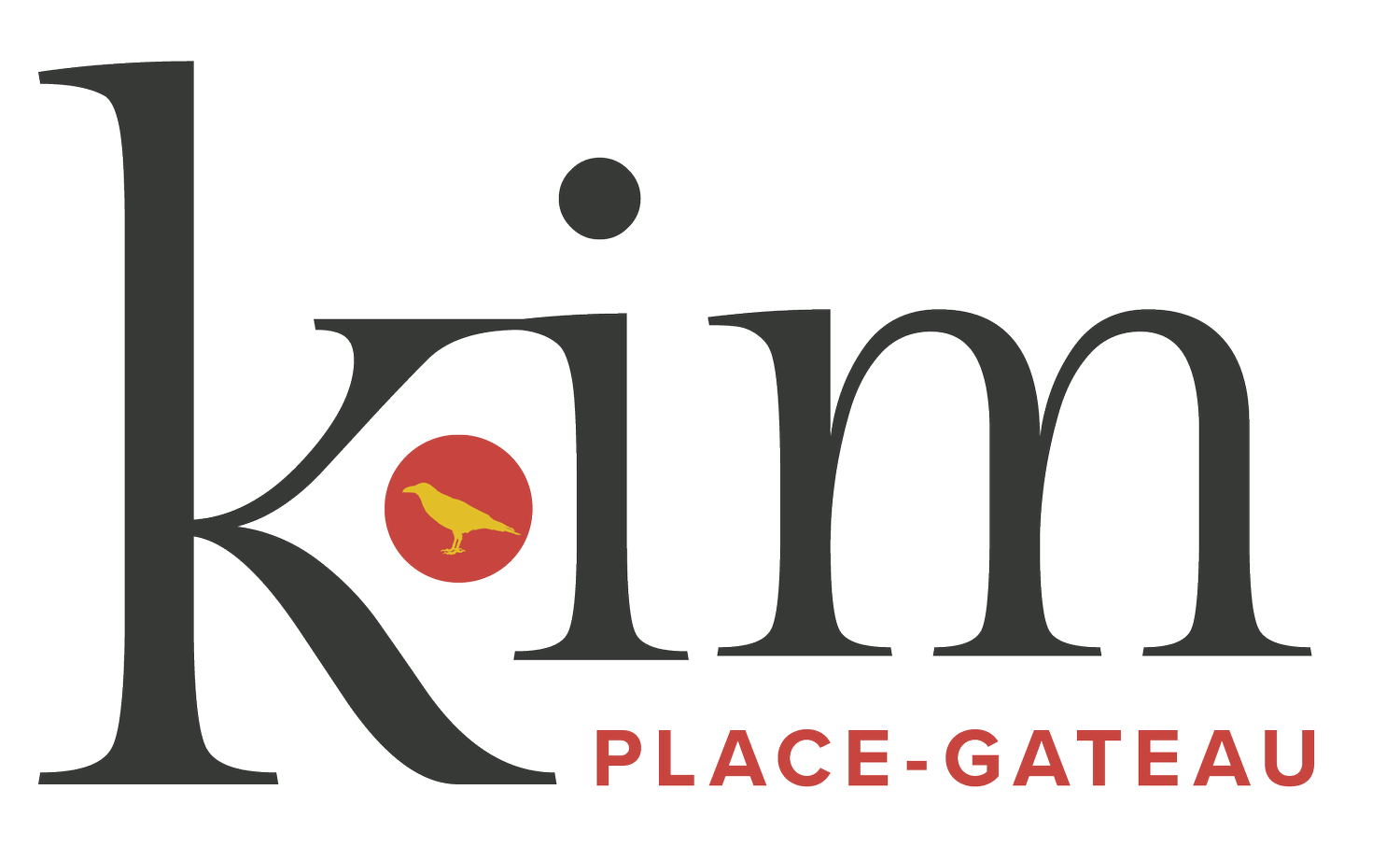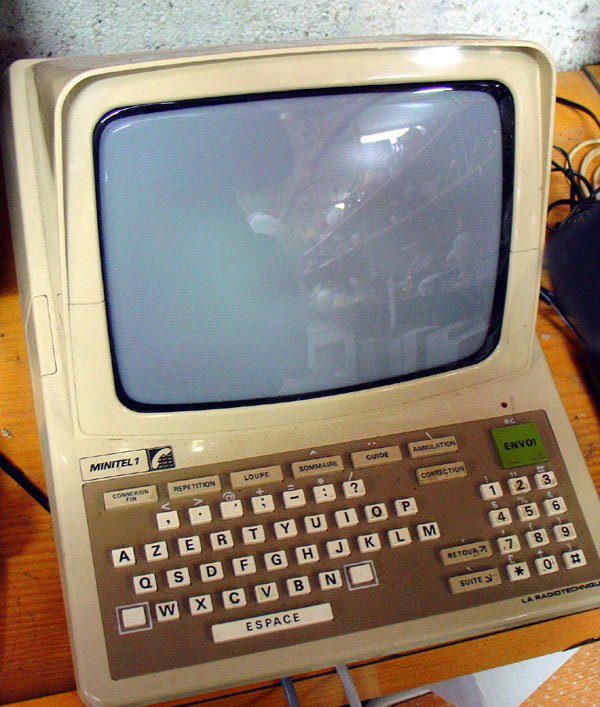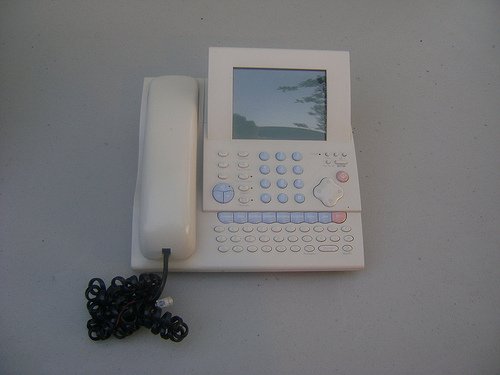Minitel: The France Wide Web
I originally posted this on my long gone blog, Obscure Ingredients, way back in 2014. Since then Messy Nessy Chic has written an excellent piece on the same topic - I recommend you go have a look!
Do you remember this first time you got online? If you're like me, it probably involved a dial-up account with AOL in 1995 or so. If you're like Jamie, it probably happened in some computer lab about six years earlier, but hey, we can't all be bleeding edge tech types.
I wish I could fondly recall anything useful I did with this stunning new technology, but all that comes to mind is chasing off perverts with names like PantieMan or LoveLadyButts in AOL-land, or sending emails that said things like, "Wow, so this is email! Call me!" Maybe I tried out a search engine, or checked the weather, but mostly I wandered around, found funny pictures and wondered what all the fuss was about.
Meanwhile, people had been booking their train journeys and checking their bank balances electronically for over fifteen years. Students were applying for college and couples were making restaurant reservations, all electronically. Sex chat was old hat for millions of people already, and phone books? Why have a phone book when you have access to a digital database of phone numbers that's always updated, and always complete? Wait, you couldn't do this in the early 80's? I guess you didn't live in France.
Allow me to introduce you to Minitel, a primitive interconnected system that gave users access to digital information from home. This handy and widely-used service connected millions of French users to a network of services via sturdy, futuristic-looking terminals which were provided by Poste, Téléphone et Télécommunications, or PPT* at no cost, provided recipients accept one in lieu of a white pages directory. What a deal, right? Those who took them up on it got immediate access to a precursor of the World Wide Web, more than a decade before nearly everyone outside of France.
So how did it work? Simply put, it was a videotext online service that used existing phone lines. Terminals had an alphabetic keyboard as well as a number pad, used to dial into the services.
The telephone directory was free to use in three minute increments. Everything else was based on a fee schedule, with sex chat, dubbed "Minitel Rose", being the most expensive service. (Go figure.) Purchases made at listed retailers were charged to users' phone bills, with PPT adding a healthy commission to the total. Enormous phone bills became part of the national Minitel experience, as it was easy for a careless shopper or chatter to spend the equivalent of $15-$20 an hour in connection fees.
Since the PPT had a monopoly on phone service in France, and all the terminals belonged to them, they were able to set the prices and demand whatever percentages they liked from service providers. Unsurprisingly, this business model served PPT, and eventually France Telecom, very well. At Peak Minitel, in the mid 1990s, nearly half the population of France used the device, dialing up enormous profits. Even in 2007, when most of their customer base had internet-connected computers at home, and had long since abandoned their Minitels, they still made over $100 million in revenue.
Efforts to market the technology outside of France were largely unsuccessful. This could be because the unique situation that existed in France at the time—a telecom that held a monopoly; a government willing to back unfamiliar, experimental technology; and loads of access to investment capital—wasn't found elsewhere. Or perhaps no one was interested in backing a technology so tied up in a foreign telecom's bottom line. The fact that it was offered only as a closed, all-inclusive system didn't woo many buyers, either. However, Minitel and Minitel-ish services did wander outside French borders here and there, with varying degrees of success. I used Teletext in the UK in the early 90's, and found it pretty useful for weather (rainy) and flight schedules (late). However, timing is everything, and once consumers had access to the internet, Minitel was doomed, despite attempts to provide modern services like texting a cell phone. It hung on in France until June of 2012, far outlasting its presence elsewhere.
Minitel's legacy persists in the form of various Twitter accounts, and a Minitel Redux is an ongoing (no longer) project developed by CCTSI's Fab Lab (now defunct French website) that uses these obsolete terminals in new ways, including posting tweets. Their "Rehab Lab" invites the public to help them discover ways to share ideas about how to restore and repurpose Minitel hardware rather than to simply forget this groundbreaking technology.
I have a geeky friend who lives in France; he pointed to a Minitel terminal in a French post office one day, saying "This weird little terminal connects to a whole separate French internet. They're in every post office, and lots of people still have them at home. I have no idea why they still exist." This was in 2011 or so, a year before France Télécom-Orange pulled the plug on Mintel forever.
Thanks so much to Kevin Driscoll at Minitel.us, who kindly allowed me to use his images. They've collected a wealth of data about Minitel history, hardware, kitsch and accessories. Head on over there for much, much more.
* Now split into France Telecom and La Poste.
Sources: The Independent (please enjoy the causal French-bashing), The New York Times, The Guardian, Le Minitel et Alcatel, Wikipedia (of course) and Le Monde.
Featured image via the Computer History Museum.



